Growing Significance of Programmatic and Data in OOH Advertising

Growing Significance of Programmatic and Data in OOH Advertising Are you part of the OOH (Out-Of-Home) or the Digital OOH (DOOH) advertising industry? Then exciting times are ahead for you. Recent advancements in AdTech have led to the rise of one of the biggest trends ever seen in the OOH format. Yes, we are talking about programmatic OOH advertising. A significant global demand for programmatic OOH ads is expected in 2024 and beyond. In fact, most of the spending in OOH campaigns this year will be driven by a rapid expansion in programmatic OOH and data advertising. In this post, we will understand the growing significance of programmatic and data in OOH advertising. What is programmatic OOH advertising? Programmatic OOH advertising is the process of automatic buying, selling, and delivering out-of-home advertising. Unlike traditional OOH advertising, programmatic OOH advertising uses computers to orchestrate the sale and distribution of ad content. This is quite similar to what is prevalent in typical online advertising. The only difference is – in programmatic OOH advertising, customers define specific parameters for media acquisition, which then performs programmatic data analysis and triggers automatic ad purchases upon fulfillment of these criteria.With that introduction, let us understand why programmatic OOH advertising has grown in importance in recent years. Why is the significance of programmatic OOH advertising surging? Here are 6 different reasons why programmatic OOH advertising is the new talk of the town in the OOH industry: 1. Quicker activation Advertising and marketing are extremely time-dependent. Even a couple of days you waste in launching a campaign can be the difference between a successful sale and a lost sale. This is where programmatic OOH advertising helps, as it lets you quickly upload, schedule, and initiate campaigns. Put simply; it doesn’t matter if your campaign has to align with the latest social trends or if you need to respond promptly to a market shift; programmatic OOH ensures the timely delivery of campaigns. 2.Real-time optimization Programmatic OOH advertising can help optimize your campaigns in real time, a key requirement in the OOH industry. Advertisers can dynamically enhance their campaigns thanks to continuous monitoring of campaign performance and the generation of advanced reports. Advertisers can swiftly adjust their messaging, targeting criteria, and creative components as and when needed. This proactive, real-time model enables data-driven decision-making. 3. Dynamic Creative Optimization Imagine you run an OOH creative display campaign during an Ashes test match between England and Australia. If England beats Australia, you would want the creative to change quickly to congratulate England so that fans witness the congratulatory message while returning home. This is made possible via Programmatic OOH thanks to its Dynamic Creative Optimization capabilities. Advertisers can also modify content such as images and ad copies based on unique factors such as weather conditions and traffic information. For instance, you can display ads based on the temperature or UV index to display the most relevant ad creative. 4. Improved targeting Programmatic DOOH also enables you to reach your desired audience with amazing accuracy. It uses a data-driven and programmatic strategy to help you carefully target specific demographics and locations, which ultimately helps in pushing hyper-relevant and personalized messages. Even granular factors such as the time of day can be used to improve your targeting capabilities. Ultimately, programmatic targeting ensures that all your ads are more impactful and result in better conversion rates. 5. Creative opportunities Programmatic OOH advertising has unlocked a cartload of opportunities for advertisers. Thanks to the creative flexibility programmatic OOH offers, advertisers can run an ad on a wide variety of screens. Be it a small TV in a gym to a large screen in a shopping mall, advertisers can target people from walks of life that were previously unimaginable. Advertisers have all the knowledge at their fingertips, including who, where, and when someone will see their ad. This helps them build targeted messages into their creative that are supported by the ad’s physical surroundings. 6. Integration capabilitiesProgrammatic OOH seamlessly integrates various data sources, including mobile and online data, amplifying campaign effectiveness through informed decision-making, optimization, and impact measurement. Moreover, this integration with other advertising channels, like digital and social media, fosters a smoother customer journey, augmenting the overall efficacy of OOH campaigns. Wrap Up The role of programmatic technology has transformed the way OOH advertising works. Thanks to it, advertisers can now achieve unprecedented levels of targeting precision, flexibility, and overall effectiveness in their campaigns. However, infusing programmatic technology into OOH advertising is not easy and takes a lot of time and resources. This is where the need to partner with an OOH expert like Brysa arises. We are the world’s leading OOH consultant with a focus on the Salesforce ecosystem. We ensure that you and your team effortlessly adapt to the changing OOH landscape including the efficient handling of programmatic and data in OOH advertising. To know more about Brysa and how we can help, contact us now. Frequently asked questions 1. What are the creative opportunities offered by programmatic OOH advertising? Programmatic OOH provides creative flexibility, allowing advertisers to run ads on various screens and target diverse audiences across different locations and times, maximizing the impact of their campaigns. 2. Why is programmatic OOH advertising significant? It offers quicker campaign activation, real-time optimization, dynamic creative changes, improved targeting, creative flexibility, and seamless integration with data sources. 3. How does OOH advertising differ from traditional methods? Unlike traditional OOH advertising, programmatic OOH utilizes automated processes, enabling real-time adjustments and data-driven targeting. 4. How can I learn more about programmatic OOH advertising? Contact Brysa for insights and consultation on implementing programmatic OOH advertising strategies tailored to your needs. 5. How does programmatic OOH advertising integrate with other channels? Programmatic OOH seamlessly integrates with mobile, online, and social media data, amplifying campaign effectiveness through informed decision-making, optimization, and impact measurement, fostering a smoother customer
Preparing Your Salesforce Tech Stack for a Stronger 2024

As we stand on the cusp of 2024, one can anticipate an upswing in market conditions. After all, consumer confidence is on the rise, and there is a newfound resurgence in demand for various products and services. Rapid advancement in technology is also unlocking new avenues for businesses to operate and engage with customers. In this context, Salesforce, with its extensive suite of customer experience and sales tools, is at the forefront of enabling organisations to succeed in this changing ecosystem. Now, if you wish to harness the opportunities presented by the anticipated market uptick in 2024, it is important to keep your Salesforce tech stack in optimal condition. This blog is a step-by-step guide on how to achieve this. Step 1: Assess your current tech stack Start with a thorough evaluation of your existing Salesforce setup. Pay attention to components, tools, and integrations that make up your Salesforce ecosystem. Evaluate the performance by assessing the speed, efficiency, and reliability of every tool and integration. Note down any performance bottlenecks in them. Bonus if you could gather feedback from team members who use Salesforce tools regularly. They can highlight specific pain points that they face regularly, resulting in a more holistic assessment. Key questions to answer in this step: How efficiently does your tech stack perform? What gaps exist in your current tech stack? How efficient are your integrations with other systems? Step 2: Set goals Goals offer a clear focus on what’s most important for your organisation. You can use goals to prioritise initiatives, making it easier to decide where to allocate resources and effort. Begin by identifying your organisation’s overarching business objectives for 2024. Most importantly, ensure that the goals are SMART (Specific, Measurable, Achievable, Relevant, and Time-bound). SMART goals are easier to track and evaluate. Some of the common goals include: Boost sales revenue Improve lead conversion rate Enhance customer retention rates Shorten sales cycle Key questions to answer in this step: What are your business objectives for 2024? How can Salesforce support your business objectives? Are your goals SMART? Step 3: Stay up-to-date When you are up-to-date with the latest trends in Salesforce, your organisation automatically gains a competitive edge. It allows you to leverage strategies that can put you ahead of competitors. For instance, by regularly reading tech news websites, industry publications, and blogs that cover Salesforce, and related technologies, you can anticipate the direction in which the industry is moving. This, in turn, helps you innovate and adapt your Salesforce tech stack to align with market demands and changing customer preferences. Staying current also helps you address emerging threats and ensure the security and privacy of customer data in Salesforce. Key questions to answer in this step: What are the recent Salesforce updates and new features I should be aware of? What are the emerging customer Expectations and Preferences? What security threats are emerging in the space? Step 4: Cleanse your data This step is all about identifying, correcting, and eliminating inaccuracies, inconsistencies, and redundant information in your Salesforce database. After all, clean and accurate data is the foundation for informed decision-making. Flawed data can lead to misguided decisions, harming your organisation’s success. You can adopt data quality tools or services to automate the cleansing process, as they can help with tasks such as data deduplication, standardisation, and validation. Key questions to answer in this step: What are the specific data quality issues we currently face? What data quality standards should we establish for our Salesforce database? Are data formats and values standardised across the database? Step 5: Make your tech stack scalable A scalable tech stack can accommodate increased data volume, user numbers, and business operations as your organisation grows without causing performance bottlenecks. Scalability allows you to avoid costly reconfigurations or migrations as you expand. It optimises your technology investments and minimises operational disruption. Always architect your tech stack with scalability in mind. This might involve using microservices, containers, or a distributed architecture that can grow organically. Key questions to answer in this step: Is the current tech stack scalable? Are we ensuring high availability and load balancing? What mechanisms are in place for scalability testing and monitoring? Step 6: Pick the right Salesforce partner Implementation and Partners can play a vital role in implementing, customising, and optimising your Salesforce tech stack. The right partner brings their deep expertise and experience to the table as they are well-versed in Salesforce solutions and can provide valuable recommendations for your business. They can also customise and integrate the Salesforce system to align with your precise business processes and needs. This ensures that your tech stack can function seamlessly. Lastly, the right partner can help you realise a faster ROI by efficiently setting up Salesforce for maximum productivity. Key questions to answer in this step: Does the Salesforce partner have certifications and specialisations? How familiar is the Salesforce partner with your industry? Does the Salesforce partner have strong testimonials? About Brysa Brysa is a leading Salesforce partner in the UK, translating businesses’ unique needs into tailored Salesforce solutions. Their commitment to innovation makes Brysa a reliable partner for organisations seeking to optimise their Salesforce tech stack and drive their customer-centric initiatives when the markets pick up in 2024. To know more about how Brysa can help your business manage the Salesforce tech stack, contact us now.
How Streamlining Workflows on Salesforce Can Boost Business

As a Salesforce partner and implementation specialist, at Brysa, we understand that many businesses face the challenge of managing multiple systems and platforms for their employees. This leads to a fragmented work experience, causing decreased productivity and decreased efficiency. We’ve seen firsthand how implementing Salesforce as a single platform can streamline operations and increase productivity across a wide range of industries. Salesforce is more than just a CRM platform. It’s an all-encompassing system that can handle sales, marketing, customer service, finance, and more. By using a single platform, employees no longer have to waste time switching between different systems or applications. Instead, they can access all the tools they need in one place, increasing efficiency and productivity. For example, let’s consider a sales manager who needs to keep track of leads, deals, and accounts. With Salesforce, they can do all of this in one place, without having to switch between different systems or applications. This allows them to easily manage their sales pipeline, quickly respond to customer inquiries, and make data-driven decisions to improve their sales process. Moreover, Salesforce can provide customised dashboards that provide a clear overview of business performance. From a high-level view of the company’s financial health to detailed information on individual sales reps’ performance, these dashboards can provide employees with a real-time snapshot of their work. This allows them to quickly identify trends and areas of improvement, making it easier to make data-driven decisions that improve business performance. Salesforce’s flexibility also means it can be tailored to meet specific business needs. For example, if a business requires a specific workflow, custom objects can be created in Salesforce to match it. This customisation means that businesses can build their own unique solutions that are tailored to their specific needs. In addition, Salesforce’s platform has built-in collaboration tools, making it easier for employees to work together. For example, employees can use Chatter, Salesforce’s internal social network, to share ideas, ask questions, and collaborate on projects. This can improve communication and increase engagement among employees, creating a more positive and productive work environment. Finally, Salesforce’s platform provides businesses with unparalleled visibility into their operations. By using Salesforce’s data analytics tools, businesses can gain insights into their sales pipeline, customer behavior, and financial performance. This allows them to quickly identify areas for improvement and make data-driven decisions that improve business performance. In conclusion, as a Salesforce partner, we have seen the benefits of implementing Salesforce as a single platform for businesses. By using a single system, businesses can streamline their operations, increase efficiency and productivity, and improve collaboration among employees. Salesforce’s flexibility and customisation options mean that it can be tailored to meet the specific needs of any business, making it a valuable asset for companies of all sizes and industries.
How Mid-Sized Companies Can Boost Their Growth with Organized IT Dev Processes

Medium-sized businesses often find themselves at a unique crossroads; they are no longer small startups but haven’t yet reached the stature of large enterprises. This transition stage can be challenging, and it’s essential to have the right tools and strategies in place to grow and succeed. One such tool that can make a significant difference is Salesforce, a powerful CRM platform that can streamline operations and drive efficiency. In addition, a well-organized IT development process can make all the difference when implementing Salesforce successfully. Why Salesforce is Perfect for Medium-Sized Businesses Salesforce is much more than just a CRM platform. It offers a comprehensive ecosystem that caters to sales, marketing, customer service, finance, and more. It is a tool that massively helps in maximising the ROI for SMEs. Companies can enjoy several benefits: Improved Efficiency: With all tools accessible from one platform, employees can focus on their work without wasting time switching between different systems (Read our case study of how we merged Salesforce with Sharepoint to avoid duplication and improved resource and time efficiency by 50%). Customised Dashboards: Real-time insights into business performance become readily available through tailored dashboards, empowering data-driven decision-making. Flexible Solutions: Salesforce can be customised to suit unique business needs, ensuring that the platform grows and evolves with the company. Better Collaboration: Built-in collaboration tools, like Chatter, encourage seamless communication and teamwork among employees, leading to a positive work environment. Greater Visibility: In-depth insights into sales pipelines, customer behavior, and financial performance become accessible through Salesforce’s data analytics tools. Organised IT Development Processes: The Key to Success To fully leverage Salesforce’s potential and ensure successful implementation, it’s crucial to have an organised IT development process in place. This includes properly gathering requirements, allowing enough time for testing, and ensuring robust development. Here’s why these elements matter: Accurate Requirements Gathering: A deep understanding of your business’s unique needs is vital when designing a tailored solution. Taking the time to analyse requirements ensures that Salesforce implementation aligns with your business goals and processes, leading to optimised results and higher ROI. Sufficient Time for Testing: Thorough testing is essential for any software implementation, including Salesforce. By allowing enough time for testing, you can ensure that your customisations, integrations, and workflows function as intended, reducing the risk of costly errors or inefficiencies. Focus on Robust Development: Prioritising high-quality development practices leads to a stable, secure, and scalable Salesforce solution. By adhering to industry best practices and standards, you can create a reliable platform that supports your business now and into the future. Embrace Salesforce and Streamline Your IT Development for Greater Success Medium-sized businesses need to adapt to the ever-evolving business landscape, and investing in Salesforce can provide them with the competitive edge they need. When combined with organised IT development processes, these companies can ensure a successful Salesforce implementation, resulting in increased efficiency, productivity, and growth. At Brysa, our team of Salesforce experts is passionate about helping medium-sized companies harness the power of Salesforce and streamline their IT development processes. Reach out to us today to find out how we can help your business thrive with Salesforce.
Salesforce and Process Mining: Transforming Media Industry Operations

The media industry is characterised by its creative processes and dynamic campaign strategies. However, the complexity of these operations often leads to inefficiencies, significantly impacting a company’s bottom line. Process mining, a rapidly growing area of information technology, offers a potential solution to streamline these convoluted processes. As Salesforce continues to dominate the customer relationship management (CRM) landscape, partnering with experienced Salesforce and process consultants becomes essential for media companies seeking to optimise their operations (read detailed blog of why Salesforce is the perfect partner of growing media and publishing businesses). According to one estimate, inefficiencies in business processes can cost companies between 20% and 30% of annual revenue. Process mining technology aims to untangle these procedural challenges. By extracting log files from IT systems and using algorithms to process the data, process mining tools can automatically create models that show the reality of the operations. This insight helps businesses identify bottlenecks, redundancies, and areas of improvement. With a growing market and numerous firms offering a range of mining services, process mining has become increasingly competitive. These services include checking whether processes work in practice as they should on paper and measuring how they compare to the same process at other companies. Increasingly, process mining is being combined with artificial intelligence to predict where and when bottlenecks may occur. For media companies, partnering with experienced Salesforce and process consultants is crucial in leveraging process mining technology. Salesforce, as the leading CRM platform, has a wealth of data on customer interactions and campaign performance. Integrating process mining tools with Salesforce can enable media companies to optimise their creative processes, campaign management, and customer service. As it is, there is a growing significance of data and programmatic in OOH Advertising. In the media industry, process mining can be particularly beneficial when it comes to managing creative and campaign-related processes. By identifying inefficiencies and areas for improvement, media companies can reduce the time it takes to bring a campaign to market, optimise resource allocation, and improve overall campaign performance. Moreover, the insights gained through process mining can help streamline communication between different departments, ensuring that everyone is aligned and working efficiently. As more media companies adopt Salesforce and other CRM tools, the need for process mining and optimisation services will only grow. To maximise the benefits of process mining, media companies must work with consultants who have a deep understanding of both Salesforce and the unique challenges faced by the media industry. Salesforce and process consultants can help media companies get the most out of their CRM tools by: Analysing and optimising creative processes, ensuring that resources are used efficiently and projects are delivered on time. Identifying bottlenecks and redundancies in campaign management, allowing for faster and more effective decision-making. Streamlining customer service processes, improving response times and customer satisfaction. Implementing predictive analytics to anticipate potential issues and proactively address them before they impact performance. Comparing processes across different teams and departments, fostering best practices and promoting continuous improvement. By partnering with experienced Salesforce and process consultants, media companies can leverage the power of process mining to transform their operations, drive efficiency, and improve overall performance. In an industry where creativity and innovation are paramount, process mining can provide a much-needed edge in a competitive landscape.
Navigating the AI Transformation: The Crucial Role of SF & Change Management Expertise

The integration of AI technologies in the media industry has opened up new opportunities for innovation and efficiency. However, the adoption of these technologies comes with its own set of challenges. In this blog post, we will explore the potential pitfalls of integrating AI into existing workflows in the media industry, emphasising the importance of having both Salesforce and change management expertise to ensure a successful transition. The Challenges of Integrating AI Technologies The integration of AI technologies into existing workflows in the media industry poses several challenges that can lead to program failure if not managed well. Some of these challenges include: Resistance to change: Employees may be reluctant to adopt new technologies due to fear of job displacement or the belief that AI-generated content is inferior to human-produced content. Technical difficulties: Implementing AI tools may require significant infrastructure upgrades or changes to existing systems, which can be both time-consuming and costly. Integration issues: Ensuring seamless integration of AI tools with existing processes and platforms can be a complex task, particularly if there are compatibility issues or other technical hurdles to overcome. Training and support: Employees need to be trained to use AI tools effectively and adapt to new workflows, which requires dedicated resources and time. The Role of Salesforce and Change Management Expertise To mitigate the risks associated with AI integration in the media industry, organisations need to rely on both Salesforce and change management expertise. Salesforce Expertise: Seamless integration: Salesforce experts can help ensure that AI tools are seamlessly integrated with existing platforms, reducing the risk of technical issues and compatibility problems. Performance tracking: Salesforce provides the ability to track the performance of AI-generated content, enabling organisations to make data-driven decisions about the effectiveness of their AI tools and make adjustments as needed. Quality control: Salesforce’s tools and services can help organisations manage AI-generated content and ensure that quality standards are maintained, minimising the risk of brand damage or loss of audience trust. Change Management Expertise: Addressing resistance to change: Change management experts can help organisations identify and address the root causes of employee resistance to AI integration, such as providing reassurance about job security and demonstrating the benefits of AI-generated content. Developing a change strategy: A well-planned change strategy is essential for a smooth transition. Change management professionals can help create a roadmap that outlines the steps required for successful AI adoption, taking into consideration organisational culture, resources, and goals. Training and support: Change management experts can help organisations develop and implement comprehensive training programs that ensure employees have the necessary skills and knowledge to utilize AI tools effectively and adapt to new workflows. Monitoring and adjustment: Change management professionals can help organisations monitor the progress of AI integration, identify potential issues or areas of improvement, and make adjustments to the change strategy as needed. The successful integration of AI technologies into the media industry requires a careful balance between embracing innovation and managing the associated risks. Organisations must recognise that both Salesforce and change management expertise are critical to ensuring a smooth transition and avoiding program failure. By leveraging the knowledge and skills of these professionals, media companies can navigate the AI transformation with confidence and capitalize on the opportunities it presents.
How Small and Medium-Sized Businesses Can Maximize ROI with Salesforce

Small and medium-sized businesses can maximise their return on investment (ROI) with the world’s leading CRM platform, Salesforce. However, the platform’s constant evolution can make maximising ROI challenging. This is where engaging with experienced Salesforce consultants can be a game-changer. Here are some tips on how to maximise ROI with Salesforce and experienced consultants. 1. Staying Up-to-Date with Salesforce’s Innovations Salesforce’s triannual releases provide a steady stream of new features, capabilities, and opportunities to support evolving business needs and give companies a competitive edge. However, staying up-to-date on new functionality and customising it to meet business needs can be challenging. To get the most out of your investment, it’s important to stay up-to-date with Salesforce’s innovations. 2. Engaging with Experienced Salesforce Consultants Experts who know how to make Salesforce sing are key to capitalising on the platform’s constant innovation. However, good Salesforce administrators, architects, consultants, developers, etc., have embraced the complexity of Salesforce, making it difficult to find experienced Salesforce talent. This is where experienced consultants come in. Experienced consultants have the breadth and depth of knowledge to quickly and accurately solve complex challenges. They have the consulting experience to listen between the lines, diagnose your needs, and design solutions to meet your goals. 3. Leveraging the Benefits of Experienced Consultants There are many benefits to working with experienced consultants, including: Specialisation: Experienced consultants have the specialised skills and knowledge to quickly and accurately solve complex challenges. Flexibility: Pay only for the hours you need and exactly when you need them. Speed: Bypass the traditional recruitment process and get started project work started faster. 4. De-Risking Digital Salesforce Transformations Digital Salesforce transformations can be difficult for small and medium-sized businesses, but they are essential for growth. At Brysa, we have developed a tested methodology that de-risks digital Salesforce transformations. This includes careful planning, clear communication, data and information security, and a balanced focus on people, processes, and technology. Our change management practices are based on Agile principles and are tailored to work effectively in fast-paced, dynamic, high-volume industries such as digital media and digital out of home media. 5. Prioritising Business Processes and Workflows Business processes and workflows should be designed to serve business needs. We create or optimise these processes and workflows using solid data, focusing on key performance indicators (KPIs) that you can accurately measure after the processes have been re-engineered and technology has been integrated. This approach sets the foundation for a successful launch and ongoing improvement, ensuring that the processes and workflows are aligned with your business goals. Conclusion Maximising ROI with Salesforce and experienced consultants can help small and medium-sized businesses achieve significant improvements in their operations. To make the most of Salesforce, engage with experts who can help you navigate its complexities. At Brysa, we offer Salesforce and AdTech consultancy services designed to help you achieve your business goals and maximize your ROI. Contact us today to learn more.
The Power of AI in Media and Advertising: How Salesforce Einstein Transforms Engagement

The Sales team in the media and advertising industry probably well aware of the power of Salesforce and its potential to revolutionise sales processes. They might also have heard about the buzz surrounding artificial intelligence (AI) and its growing impact on the business world. But how can the team harness the power of AI within your Salesforce ecosystem to enhance customer engagement and drive revenue growth? The answer lies in Salesforce Einstein. Salesforce Einstein is an AI-powered platform integrated within Salesforce, designed to provide users with intelligent insights, predictions, and recommendations based on your company’s data. It automates complex processes, uncovers hidden patterns, and helps your team make more informed decisions – all in real-time. In this blog post, we’ll explore how Einstein can transform customer engagement in the media and advertising industry and help you stay ahead of the competition. 1. Personalising Customer Journeys In today’s fast-paced, digital-first world, customers expect personalised experiences tailored to their preferences and behaviors. Salesforce Einstein enables you to achieve this by analysing vast amounts of customer data and identifying patterns and trends that can help you create more targeted and relevant marketing campaigns. Einstein’s AI-powered predictive analytics can segment your audience based on their online behavior, demographic information, and past interactions with your brand. It can also recommend the best channel and time to engage with each customer, resulting in higher click-through rates and more effective ad campaigns. Read why we believe Salesforce CRM is the perfect partner for your growing media and publishing businesses. 2. Smarter Lead Scoring and Conversion Predictions Einstein’s AI capabilities can help your sales team prioritise leads by predicting which ones are most likely to convert. By analysing historical data on customer interactions and correlating it with individual lead profiles, Einstein can assign a lead score that reflects the probability of conversion. This allows your sales team to focus their efforts on high-priority leads, improving overall efficiency and conversion rates. In addition, Einstein can predict potential churn risks among your existing clients, giving your team the opportunity to intervene and retain valuable customers before they slip away. You can therefore, boost your Ad efficiency with strategic tech integration. 3. Enhancing Creativity with AI-Driven Content Generation One of the challenges in the media and advertising industry is producing a steady stream of engaging and relevant content. Einstein’s AI-driven natural language processing (NLP) and image recognition capabilities can help your creative team come up with innovative ideas and concepts for your campaigns. For example, Einstein can analyse textual data to identify trending topics and keywords that resonate with your target audience. It can also recognise objects and patterns in images, providing inspiration for visual storytelling. By combining these insights with your team’s expertise, you can create compelling content that stands out in the crowded media landscape. Salesforce assembles all data in one place called Single Source of Truth (SSOT). This SSOT creates a solid foundation for GenAI in your company processes. 3. Optimising Ad Spend with AI-Powered Insights Media and advertising budgets are often spread across multiple channels, making it challenging to allocate resources effectively. Einstein can help optimise your ad spend by analysing campaign performance data and identifying which channels and strategies generate the best results. By leveraging AI-driven insights, you can fine-tune your campaigns, allocate your budget more efficiently, and maximise your return on investment (ROI). 4. Embracing a Data-Driven Culture To make the most of Salesforce Einstein, it’s crucial to establish a data-driven culture within your organisation. Encourage your team to embrace AI-powered insights and use them to inform their decision-making process. Provide training and resources to help them understand how Einstein works and how it can benefit their daily tasks. By fostering a data-driven mindset, your team will be better equipped to leverage Einstein’s full potential, leading to more accurate predictions, smarter decision-making, and improved customer engagement. We believe there is an immensely growing significance of programmatic in OOH Advertising and Salesforce with this data driven approach enables that. In conclusion, Salesforce Einstein offers a powerful and versatile AI solution that can help you transform customer engagement in the media and advertising industry. By personalising customer journeys, predicting lead conversions, enhancing creativity, optimising ad spend, and embracing a data-driven culture, you can stay ahead of the competition and drive revenue growth. At Brysa, we understand that navigating the world of AI can be challenging, especially when it comes to implementing advanced solutions like Salesforce Einstein. That’s why our team of excellent Salesforce consultants, based in London, is here to help. With our extensive knowledge and experience in the Salesforce ecosystem, we can guide you through the process of understanding and leveraging Einstein AI to its full potential. Our experts will work closely with you to assess your current Salesforce environment, identify opportunities for AI integration, and develop a tailored strategy to enhance your customer engagement initiatives. We pride ourselves on our commitment to client success, and we will ensure that your organisation reaps the maximum benefits from Einstein AI, while also providing ongoing support and guidance throughout your journey. Don’t let the power of AI in media and advertising pass you by. Partner with Brysa today and unlock the transformative potential of Salesforce Einstein for your business.
Preventing Revenue Leakage: Solutions for Businesses

Generating profits is a top priority for businesses of all sizes. However, a common issue that businesses face is revenue leakage, which occurs when a business earns revenue but doesn’t collect it. This problem can be caused by a variety of factors, including human error, poor processes, and bad data. In many cases, revenue leakage goes unnoticed, resulting in a significant loss of revenue for the business. There are several areas where revenue leakage tends to occur, including unenforced contracts, late payments, late invoicing, data entry errors, poor accounting, high discounting, and poor revenue operations. By understanding these areas and implementing effective solutions, businesses can prevent revenue leakage and protect their bottom line. 1. Unenforced contracts One of the primary causes of revenue leakage is unenforced contracts. This occurs when a customer fails to pay for services that they have received. To prevent this, businesses should ensure that they have clear and concise contracts in place with enforceable terms. These terms should be agreed upon by both parties before any services are provided. Businesses should also have a comprehensive contract management system in place to ensure that contracts are followed and any breaches of the contract are addressed. Salesforce CPQ offers a contract management solution that can help businesses manage their contracts and ensure compliance with the agreed-upon terms. 2. Late payments This can be prevented by setting up a streamlined invoicing and payment collection process. This process should include sending out invoices promptly and consistently, following up with customers who have not paid, and providing convenient payment options. It may also be helpful to incentivise customers to pay on time. Accounting Seed provides a robust invoicing and payment collection system that integrates seamlessly with Salesforce, making it easier for businesses to manage their invoicing and payment processes (read our case study of how we improved efficiency by almost 30% with seamless integration). 3. Late invoicing To prevent this, businesses should implement a system to ensure that all invoices are sent out promptly and accurately. This system should include a process for tracking invoices and following up with customers who have not paid. Additionally, businesses can set up automated invoicing and payment collection systems to streamline the process. Accounting Seed offers an automated invoicing solution that integrates with Salesforce, allowing businesses to easily manage their invoicing and payment collection processes. 4. Data entry errors These errors can occur when data is entered manually into systems or when there are inconsistencies between different systems. To prevent this, businesses should have strict quality control measures in place, including a system of checks and balances to ensure that all data is accurate and consistent across different systems. Additionally, businesses can implement an automated data entry system to reduce the risk of human error. Salesforce offers a data entry solution that can help businesses automate their data entry processes and reduce the risk of errors (read our case study of how we integrated Salesforce-ChatGPT to transfer email inquiries into Salesforce leads). 5. Poor accounting FTX, which was the leading cryptocurrency exchange and was once valued at $32 Billion collapsed because of substandard accounting practices. This Poor accounting occurs when the accounting team fails to keep accurate records of financial transactions, which can result in lost revenue. To prevent this, businesses should have an experienced and skilled accounting team in place. This team should have a comprehensive understanding of the business’s financial processes and be able to identify areas where revenue leakage is occurring. Accounting Seed offers a comprehensive accounting solution that integrates with Salesforce, allowing businesses to manage their financial processes efficiently. 6. High discounting While it may be necessary to offer discounts to customers to incentivise them to buy, excessive discounting can eat away at profits. To prevent this, businesses should have a clear pricing strategy in place based on the value of their products or services. By understanding their value proposition, businesses can charge a fair price that customers are willing to pay, without sacrificing profits. Additionally, businesses can train their sales team to sell based on value rather than price, to reduce the need for excessive discounting 7. Poor revenue operations When different departments in the business are not communicating effectively, it results in lost revenue opportunities. To prevent this, businesses should have clear communication channels in place, including a system for different departments to communicate effectively. Additionally, businesses can ensure that everyone is working towards the same revenue goals, and they are not missing out on any revenue opportunities. This can be achieved by having cross-functional teams to promote collaboration, ensuring that everyone is aware of their responsibilities, and regular communication with all departments. Salesforce offers a revenue operations solution that can help businesses manage their revenue operations more efficiently. In conclusion, revenue leakage can cause significant damage to a business’s bottom line. However, by understanding the causes of revenue leakage and implementing effective solutions, businesses can protect their profits and promote growth. At Brysa, we specialise in helping businesses optimise their revenue streams. As a Salesforce and Accounting Seed partner based in London, UK, we have extensive experience in revenue management and can help businesses implement the right processes and procedures to prevent revenue leakage from happening. Our team of experts can provide valuable insights and recommendations to streamline processes and ensure businesses are collecting all the revenue they are owed. In addition to revenue management services, Brysa offers a range of services that help businesses maximise their Salesforce investment. We provide tailored Salesforce solutions, including consulting, development, integration, and ongoing support, to help businesses achieve their goals. Our team of certified Salesforce professionals works closely with businesses to understand their unique requirements and develop customised solutions that meet their needs. If you’re concerned about revenue leakage and want to ensure that your business is running at peak efficiency, contact Brysa today. We’re here to help you achieve your revenue goals and take your business to the next level.
FTX and beyond: scaling beyond QB with Accounting Seed and Salesforce

The collapse of FTX, a cryptocurrency exchange run by Sam Bankman-Fried, has shed light on the limitations of finance and accounting software for fast-growing medium-sized businesses. John Ray III, the new CEO, testifying in front of the United States Congress, highlighted that FTX used QuickBooks, a popular accounting software, but that it is not suitable for a multibillion-dollar company. QuickBooks is a great tool for small businesses, however, as a business grows, it requires more advanced features such as automation, scalability, and real-time reporting. QuickBooks simply cannot keep up with the growing complexity of financial operations. This is where accounting and finance software like Accounting Seed and Salesforce come in. Accounting Seed is a cloud-based accounting software that offers a seamless, scaleable process for businesses. It is built on the Salesforce platform, which is considered as the most innovative business enablement technology platform. This allows businesses to have a single platform for all their operations, from sales and marketing to accounting and customer service. One of the biggest advantages of Accounting Seed is its ability to automate many of the manual processes that are required for accounting. For example, it can automatically generate invoices, reconcile bank statements, and generate financial reports. This not only saves time but also reduces the risk of errors. Another advantage of Accounting Seed is its ability to scale (read the detailed comparison between Accounting Seed and its competitors like QuickBooks, Sage and Xero). As a business grows, it can easily add more users, modules, and features to the software. This allows businesses to keep pace with their growth and ensure that their accounting processes are always up-to-date. When Salesforce is integrated with Accounting Seed, businesses can get a complete view of their financial performance and customer interactions (read our case study of how we improved efficiency by almost 30% with seamless integration). This allows them to make better-informed decisions and improve their bottom line. In conclusion, Accounting Seed and Salesforce are powerful finance and accounting software that offer businesses the ability to save time and money, while also providing the scalability and automation needed for fast-growing medium-sized businesses. They are a great alternative for businesses that have outgrown QuickBooks and are in need of more advanced features to manage their financials. If your business is looking to implement Accounting Seed and Salesforce, Brysa consulting can help. Our team of experts specializes in Accounting Seed consulting, Salesforce finance consulting, and Salesforce implementation. We can help you with every step of the process, from planning and implementation to training and ongoing support. Contact us today to learn more about how we can help your business grow with Accounting Seed and Salesforce.

